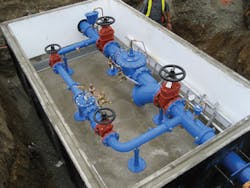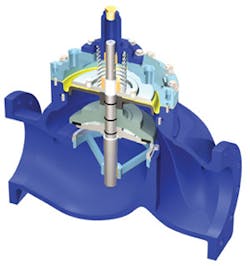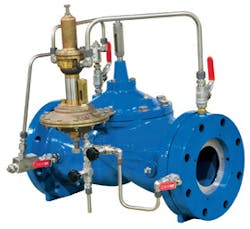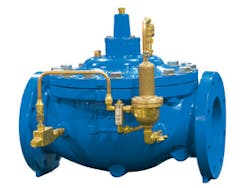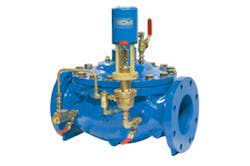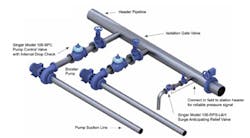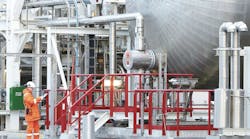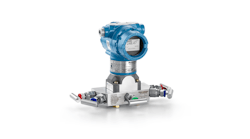Water is a resource that is often taken for granted. Yet, as the effects of climate change and population growth take hold, the challenges ahead for water supply and availability figure only to increase.
Consider Adelaide, Australia, where the Murray River has long supplied the city with its water. The Murray River has seen extensive overuse for potable, agricultural and industrial use, and now, due to this overuse and changing weather patterns, Adelaide is in trouble. In North America, Lake Lanier in Georgia, essentially the sole source of Atlanta’s water supply, is approaching a critically low period, potentially threatening that city’s water supply. Meanwhile, in Las Vegas and the U.S. Southwest, the Colorado River, which supplies Lake Mead and the Hoover Dam, is in a critical low period as well.
Unless weather patterns change, water supply in these regions will continue to face challenges as population grows and resources dwindle.
Solutions to Water Scarcity
Every water utility has some degree of leakage or water loss within its systems, which can be greatly reduced by pressure management.
In North America, for example, between 10 percent and 30 percent of the water pumped or fed into the distribution network simply leaks out of the system and into the ground. Internationally, leakage can be as high as 70 percent. Aging infrastructure, cracked pipes, poorly maintained valves, leaking gaskets, and leaking threaded connections at curb or corporation stops, are only a few examples of where leaks or water loss occurs.
The International Water Association (IWA) and the American Water Works Association (AWWA) have many water audit tools that can easily determine the levels of water loss that a water utility might be encountering. It is important to keep in mind though, the costs of water loss may be far greater than just the cost of the water being lost, as energy required to pump this water is wasted, chemicals used to treat this water are lost, and labor and resources are expended to build additional reservoirs to store more water.
What is the solution to lost water? In an ideal world, the solution would be to replace ailing infrastructure entirely — old pipes, valves, and poorly threaded connections —to ensure systems don’t leak. While this would be a very effective solution, it is generally not a feasible option due to the high replacement costs it would entail. However, pro-active water utilities will replace a small percentage of challenged systems every year to eliminate or greatly reduce leakage within that particular pipe section. This approach is sound and is practiced by many utilities around the world to help mitigate the problem. Pressure management is another avenue utilities can pursue to provide an immediate, cost-effective approach to reduce water loss and leakage.
Pressure In a System – What’s the Big Deal?
If pressure can be decreased in the system by 1 percent, the leakage rate will decrease by 1.15 percent (average and subject to variation). In daytime, consumers use a lot of water to shower, wash, cook, etc., therefore demand of flow increases. When this happens, pressure is almost always lower. At nighttime as demand is reduced, the pressure increases in the system. It is not uncommon to see pressure change by 15–30 PSI (1–2 bar) from daytime to nighttime.
In addition, pressure in a distribution system is almost always higher at the source (pump station or reservoir) and drops due to pressure loss as distance from the source increases and even more so if there is a topographic increase. If distribution lines are feeding customers in areas close to the source, it is likely too much pressure is being supplied for what is required in order to serve the most distant or highest elevation customers. To reduce leakage, it is best to give customers just enough pressure to get the job done, but never more, as that would add to leakage or wasted water.
A Programmatic Approach
A sound approach in reviewing water-loss reduction would include a pipe/system annual replacement program (focused on the most challenging areas) and a leakage location plan where teams locate leaks and then expedite the repair of those leaks. If the system is not gravity-fed and pumps are involved, Variable Frequency Drives (VFDs) can be one of many tools that can help mitigate this problem. It should be noted that while VFDs can be used as an effective tool, they should always be used in conjunction with a pressure-management approach.
When considering a comprehensive water-loss and leakage program it is common practice for water utilities to hire a consulting firm that specializes in this discipline. After completing a water audit, a consultant will usually analyze the system and begin to establish DMAs (District Metered Areas), which typically consist of a meter and pressure-reducing valve. These DMAs are often designed to be a dedicated pressure zone for between 2,000 and 3,000 service connections, but this number can vary subject to population and the utility’s desire to find the smallest leak. The meter then measures the overall flow into that specific pressure zone while the consumer, industrial and commercial meters used for billing measure flows out of the zone. Assuming the meters are calibrated, this will give leakage rates in that zone. With this information, leakage location teams can now be directed into the most challenged zones to identify areas with the greatest need. DMAs are always most effective if one source can be provided into a DMA zone and multiple meters and PRVs feeding off a looped system can be avoided. With this approach, the pressure-reducing valve can be adjusted specifically to each zone and set the pressure in that zone to supply exactly what customers require, never more. In a small town or city of 10,000 people or less, the result may be four or five DMAs or pressure zones. In a large city with many millions of residents, there may be 100 to 200 pressure zones. Each DMA will generally provide a payback of six months to one year when evaluating the cost of the water that would otherwise be lost.
Another interesting characteristic of pressure management is the reduction of pipe bursts that coincide with a sound pressure management program. It is a well-known fact that pipe bursts are usually a fairly significant portion of annual maintenance budgets. Pipe bursts often happen in off-peak periods or nighttime. The reason why these bursts occur is the same as previously discussed — i.e., due to demand being lower and pressure being higher. By managing pressures better with DMAs or pressure zones, annual maintenance budgets can be decreased and water loss associated with these pipe bursts (plus consequential damages) can be reduced.
Strategies for Pressure Reduction
When selecting a pressure-reducing valve, it’s important to have the highest quality product available and minimum maintenance. It is important to specify components like 316 stainless steel seats (no bronze/brass, as this soft yellow metal will wear), stainless steel fasteners on the external portion of the valve (no plated or galvanized externals, as they are prone to rust), and always insist on heat-fusion epoxy coatings on both the external portion of the valve, as well as internally on all wetted surfaces (avoid rusting bare ductile iron on the inside of the valve).
There are emerging technologies that can assist in ensuring the pressure-reducing control valves are stable throughout their entire stroke. Traditionally, flat diaphragms have been used in most diaphragm-operated, pressure-reducing valves. These valves can operate very effectively when operating mid-stroke, but can be challenged at very low flows to be stable. There is a technology available called “Single Rolling Diaphragm,” which can supply very consistent pressure throughout the entire stroke of the valve virtually from shutoff to the highest flow required. This is best for pressure management systems during low-flow periods.
A standard pressure-reducing valve (PRV) can be a very effective tool to control pressure. Once installed there are many options that can be incorporated in the initial PRVs to make this valve have different functions. With a standard PRV, the only limit is there is only one pressure setting downstream and this cannot be changed without manually adjusting the pressure. There must also be some pressure at the inlet to the valve (minimum of 10 PSI or .6 bar) for the valve to function.
Another approach that can assist a pressure-management scheme is to use a standard PRV and two mechanical pilots (two pilots specific to nighttime pressure and daytime pressure) and to use a simple, inexpensive battery-operated timer (IP -68) and solenoid to change pressures based on time. This approach can supply higher pressures in the daytime but cut pressures back at nighttime or off-peak periods.
A third approach is to have a special mechanical pilot modulate pressure based on flow. This approach includes the use of a proprietary pilot system and can change pressures based on flow. For this technology to be most effective there must be a minimum of 45 PSI (3 bar) at the inlet to the valve and only one supply point into the DMA. This valve can mechanically change (no batteries or power required) pressure based on flow by up to 30 PSI (fully adjustable). This means it will lower pressure at nighttime when demand is low and pressure is high and will increase pressure in daytime when demand is high and pressure is low.
|
5 Key Strategies for |
| 1. Standard pressure-reducing valves (PRVs) are a valuable tool, as they offer the flexibility to accommodate a variety of functions in the water management system. 2. Use time-based PRVs with two pressure settings — one for daytime and one for nighttime — to more efficiently serve peak and off-peak conditions. 3. Employ pressure and flow control PRVs where pressures will adjust mechanically based on flow. 4. 4-20mA control for remote SCADA operation will enable the constant adjusting of pressure based on varying flow. 5. Consider pressure-relief options to manage surge and transients. This will limit the risk of leakage and loss due to pipe bursts or increased stress on the piping system. |
A fourth approach can be full SCADA control of PRVs. By adding a 4-20 mA motor and incorporating pressure switches and flow information, a complete system can be operated remotely through SCADA, constantly adjusting pressure based on varying flow demands.
In addition to pressure management, a well thought-out program of pressure-relief valves and the associated topic of transients (surge), is an area that is often overlooked. Anywhere pumps start and stop suddenly due to PLC failure or power loss due to lightning storms, there is risk of surge damage to the pumping and piping system, as well as water loss and leakage due to pipe bursts or increased stress on the piping system. All pump stations, regardless of having single-speed motors or VFD motors, should have some sort of surge protection. There are numerous models of diaphragm-operated control valves that can provide this protection. These models include standard pressure-relief, surge- anticipating, and rate-of-rise-anticipating-pressure-relief valves.
End Result
Pressure management is becoming a very popular topic as water utilities are being pushed to maximize the efficiencies of their systems and reduce the water-loss and leakage rates. There are many different solutions available, and a well-thought out program utilizing various options can often be the best approach. A well thought-out pressure management solution can have a very short payback period when reviewing a business plan showing cost of water saved versus capital costs for initial installation. The end result is more efficient use of our increasingly scarce supply of water.

